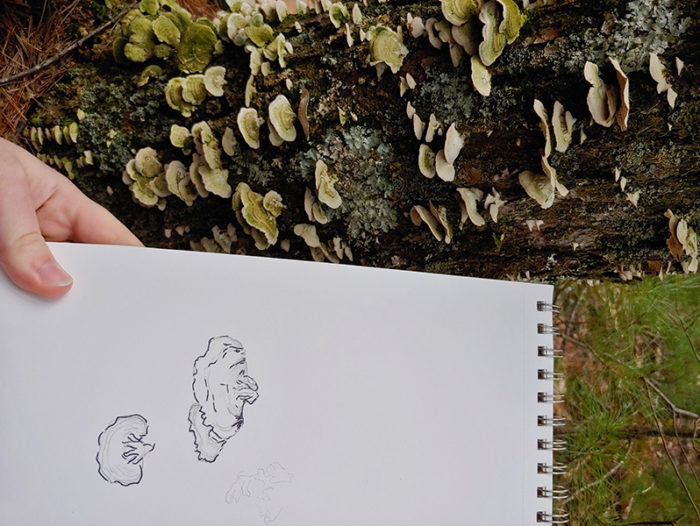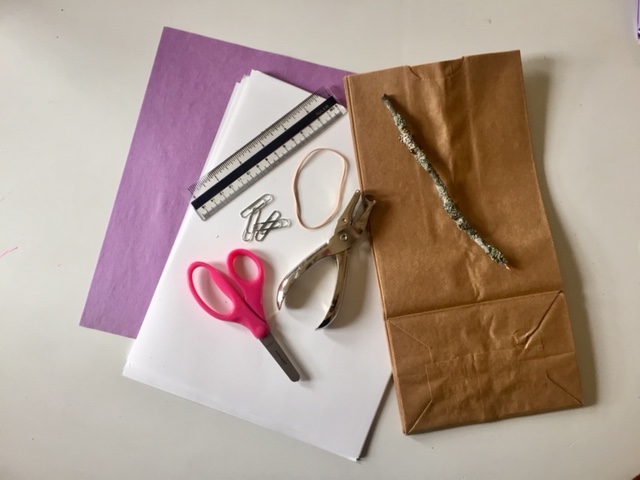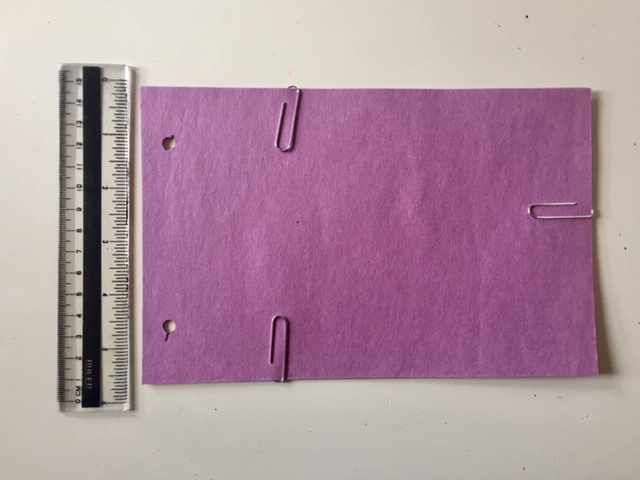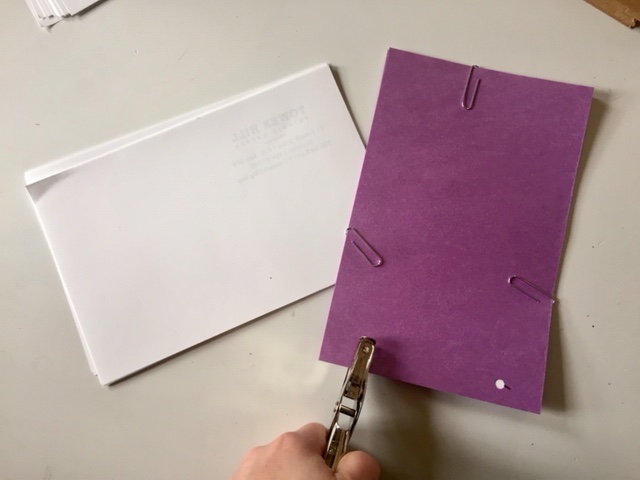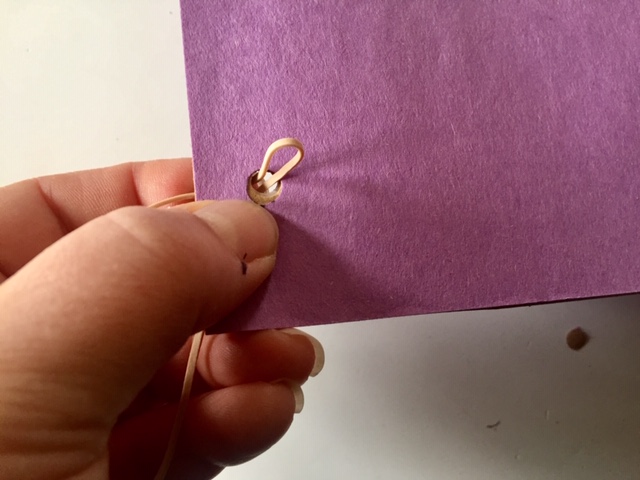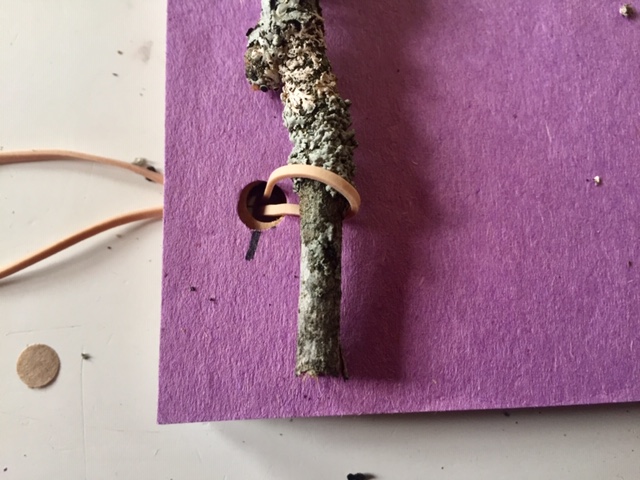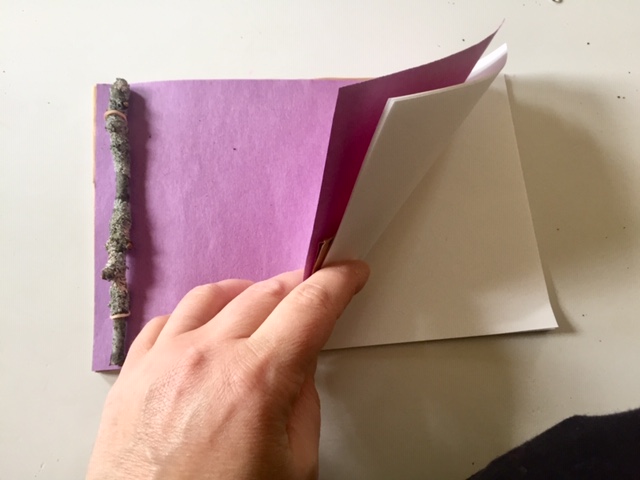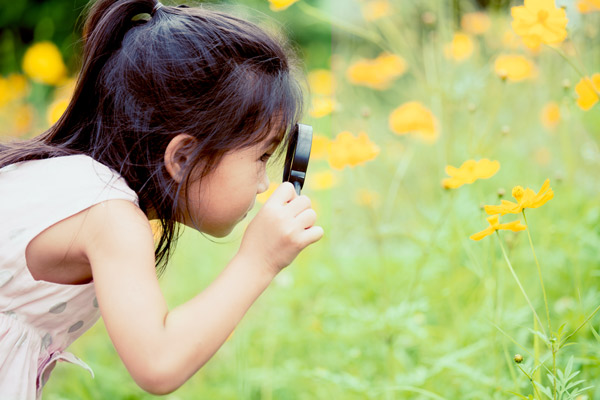
Marissa Gallant
Youth Education Manager
The natural world holds countless mysteries for those who look closely and practice the power of observation. Using our senses is an important part of exploring the world around us. Scientists use all five senses – sight, touch, smell, hearing, and even taste – to observe and study nature. Read on and tune in to learn some simple methods for using your senses to make observations of and connections to the world right outside your window.
I Notice, I Wonder, It Reminds Me Of …
The three I’s – I notice, I wonder, it reminds me of – is an educational practice that helps us to explore the natural world by improving our observational skills, teaching us to use all of our senses, and inspiring us to be creative and use our imaginations. This method of observation was first created by John Muir Laws, an artist, educator, and naturalist, who teaches that to fully understand the world around us we need to not only look closely, but also ask questions and make connections.
The first step to becoming a professional observer is to understand the difference between an observation, an identification, and an opinion. To make a true observation, a scientist will use their senses to state what they notice. For example, if you picked an interesting rock to study, saying your object is a rock would be an identification. Saying your object is pretty is an opinion. An example of an observation might be that the rock is gray, it is hard, or it smells like dirt.
Once you are ready to begin your nature study, head outside and find a comfortable place to sit and explore the world around you. This might be a bench in a nearby park, an overlook on your favorite trail, or a shady spot right in your backyard. Begin by selecting an item from nature to study. Practice making ‘I notice’ observations about your item. Write down your observations or share with a friend. Once you have noticed all you can about your item, the next step is to ask questions. Start each question with ‘I wonder’. You might wonder why your leaf has holes, or why your rock appears to sparkle in the sun, or why a particular branch on a tree does not have any leaves. Wrap up by forming connections, making statements beginning with ‘It reminds me of’. Maybe a leaf reminds you of a particular shape, or the smell of the soil reminds you of summer, or the shape of the clouds reminds you of cotton balls. There are no right or wrong answers but remember to be creative and use your imagination.
Keep practicing and you will discover things about your item that you may not have noticed at first glance. Maybe you will notice the way the light reflects off the underside of a leaf, the distinct call of the birds in your backyard, or the texture of the bark on a tree. The wonders of nature are endless once you are able to use your senses to explore.
Nature Journaling
Once you have mastered the art of observation, try creating a nature journal to record all that you notice about the world around you. Journaling can be a fun and creative way help us to slow down, be mindful, pay attention, improve our observational skills, make connections, and experience all the magic nature has to offer.
There are so many different challenges you can try to help you create entries, fill in your nature journal, and explore the great outdoors. Creating an alphabet nature journal can be a great place to start. Begin by writing each letter of the alphabet – A to Z – on a different page of your journal. Head outside and fill in each page with your finds! Be sure to use pencil to start in case you make mistakes. As you become more practiced with creating entries, challenge yourself to add as much detail as you can to your observations. Include drawings, text, labels, short stories, poems, color, measurements, and notes. You don’t need to be an expert at identifying plants or animals or a professional artist – all you need is a sense of curiosity about the world around you.
Tune in below to learn some tips, tricks, and tools for becoming a better scientist and put your observational skills to the test as we practice the three I’s.
Next join Youth Education Manager, Marissa Gallant as she explores some of the natural wonders Tower Hill Botanic Garden holds and get some inspiration for creating entries in your A to Z nature journal. Visit our gardens and grounds and continue your field studies. What will you find on your next adventure?
Don’t have a nature journal? Follow the simple steps below to create your own upcycled journal to help you keep track of your observations.
You will need:
- Scrap paper
- Rubber bands
- Twig
- Hole punch
- Paper clips
- Scissors
- Ruler
Get ready by collecting your supplies. Use any scrap paper you might have on hand for your filler pages. Construction paper, paper grocery bags, scrapbook paper, or cardstock are all great options for your cover pages.
To begin, cut all of your paper to approximately the same size and stack them on top of each other. Select two pieces of paper for your journal cover and use two or more paper clips to clip these two cover pages together. Use a hole punch to punch two holes about a half an inch in from one side. The first hole should be about an inch from the top of the paper and the second hole an inch up from the bottom of the paper.
Add your filler pages in between your cover pages, two pieces at a time. Punch holes in each of your filler pages using the holes in your cover pages as a guide. Repeat with as many filler pages as you would like to fill the inside if your journal. Stack all your pages in between your cover pages, line up the holes, and replace the paperclips to secure together.
Next, loop one rubber band through each of the holes.
Grab your twig and loop each rubber band around each end. Secure both bands to your twig and your nature journal by looping or tying off the ends. Your twig should act as the spine of your journal.
Your nature journal is ready! Head outside and start collecting your observations.
What wonders of nature will you find?

